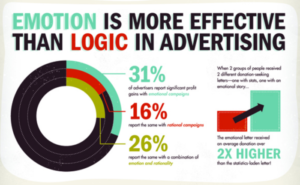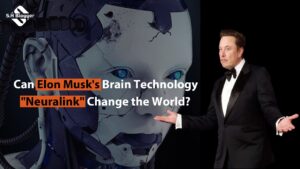Introduction
Intelligent machines are becoming an important part of our lives. You can not deny the fact that these machines are playing a vital role in our lives such as voice-activated assistants like Siri and Alexa, advanced robotics in manufacturing and self-driving cars. These machines are designed to do tasks that also help to enhance productivity and give convenience. But as they become more advanced, they also raise important questions about how we as humans interact with them.
Lorem ipsum dolor sit amet, consectetur adipiscing elit. Ut elit tellus, luctus nec ullamcorper mattis, pulvinar dapibus leo.
A major factor in these interactions is human perception. The way we perceive intelligent machines can greatly influence our comfort level, trust, and willingness to get along with new technology. Human perception has senses, thoughts, and biases. These all senses shape our responses to the technology around us.
Understanding Human Perception
Human perception is a complex process by which we interpret and make sense of the world. It consists of sensory input, cognitive processing, and emotional responses. The human senses such as sight, hearing, touch, taste, and smell all provide the raw data that our brains process to make an understanding of our environment. Cognitive elements such as memory and learning help us to know the patterns and make predictions. Emotional responses which can range from excitement to fear also shape our perceptions.
Understanding how perception works is important because it affects our interactions with intelligent machines. If our perceptions are covered by bias or misunderstanding then there are chances we may resist adopting technology that could improve our lives. A clear and informed perception can lead to more effective and smooth relationships with intelligent machines. It also opens the door to a future where technology works as a valuable partner in our daily lives.
Human Perception and Intelligent Machines
Intelligent machines consist of a broad range of technologies such as :
- Artificial intelligence (AI) algorithms
- Robots
- Virtual assistants
- Automated systems.
The above machines are designed to mimic human capabilities with applications in fields like healthcare, manufacturing, transportation, and customer service. These technologies are highly capable of performing complex tasks and learning from data. These machines in return serve a greater presence in our daily lives.
However, we see that the way we perceive these intelligent machines can highly impact how we interact with them. Human perception consists of different elements such as curiosity, trust, and fear, among other emotions. Understanding these perceptions is important to have positive interactions. This awareness will also prevent misunderstandings that could stop the adoption of beneficial technologies.
Common Perceptions of Intelligent Machines
Fear:
One of the most common perceptions is fear. This mainly comes from concerns about job displacement, loss of control, or the chances for machines to make errors with serious consequences. This fear can be intensified by fabricated media presentations of AI and robots, where technology is present as a threat to humanity.
Trust:
Trust has a major role in our interactions with intelligent machines. If people think that technology is reliable and safe then they’re more likely to adopt it. Trust is built through the following factors ;
- Consistent performance
- Clarity in how technology works
Clear communication from developers and manufacturers
Curiosity:
Many people perceive intelligent machines with curiosity, keen to explore their capabilities and understand how they work. This perception can help to get positive interactions and also give a sense of openness and a willingness to learn.
How Human Perception Shapes Interaction with Intelligent Machines
The way we see these intelligent machines influences our behavior and attitudes toward them. For example, someone with a high level of trust in AI may happily use a virtual assistant to manage daily tasks on the other hand someone who fears Automation may avoid such technologies altogether. This different point of view can create a categorization of how different groups interact with intelligent machines.
Also, different opinions and perceptions can affect the design and usage of these technologies. Developers and manufacturers should know how their products will be received by the public. Also, make sure that they share common concerns and promote a sense of security and understanding.
Influence on the Design and Development of Intelligent Machines
Human perception has a major role in the design and development of intelligent machines. As developers and engineers create these technologies, they should know how people will interact with these machines. A major aspect of this process is designing for implicit interaction. Also, make sure that users can understand and operate machines without complex training.
For example, consider a user junction on a piece of software. If the layout is complex and doesn’t follow common patterns then the user may find it challenging to use it. This complexity can cause frustration and less trust in the technology. On the other hand, if you see a well-designed interface user friendly then it can bring confidence and promote wider adoption.
Those thinking processes which are Perception-based biases can affect design decisions. If people har to anthropomorphize intelligent machines the developers might create robots with human-like features to make them more approachable. if there is a fear of AI taking over human roles then designers may emphasize clear and control features. Thie helps users to understand the technology’s limitations and capabilities.
In contrast with these perception-related challenges, developers plan to create technologies that not only perform well but are also comfortable for users. This consists of understanding cultural nuances, addressing common fears, and promoting ethical practices. In a result, the goal is to build intelligent machines that are both effective and accepted by people.
Case Studies
Human perception has a huge impact on how intelligent machines are used across different industries. Here are a few case studies that highlight this influence.
AI in Healthcare and the Trust Factor
In the healthcare field, AI is used for diagnostics, treatment planning, and patient monitoring. But the major concern is the trust factor which plays a critical role in its adoption. Patients and healthcare providers have to trust that AI algorithms are accurate. In this way, human perception is entirely shaped by the track record of the technology
It is also influenced by the transparency of its processes as well as the presence of human oversight. There are certain ways to build trust such as explaining how AI makes decisions. Also, make sure that human professionals are involved in critical choices.
Robotics in Manufacturing and the Fear of Job Loss
Robotics has transformed manufacturing by automating repetitive tasks as well as efficiency. Still, many workers think that robots are a threat to their jobs. This fear of job loss can cause resistance against automation. Manufacturers should understand this perception and work to address it by limiting employees from working in new roles. It is also emphasizing that robots are there to assist not replace. Companies that manage to work on these fears often see a smoother transition to automation and a more positive work environment.
Virtual Assistants and the Anthropomorphization of Technology
In this time Virtual assistants like Siri and Alexa have become commonplace in many households. People tend to personate these technologies also giving them human characteristics and treating them as fellows. This thought process can influence how users interact with virtual assistants making a more conversational style of communication. it also raises questions about privacy and the boundaries of human-machine relationships. Companies developing these machine assistants must keep the need for a friendly interface with the importance of privacy of user data and also keep clear differences between technology and human beings.
Future Trends
The future of intelligent machines is full of different possibilities. We know that new trends are coming that promise to redefine how we live, work, and interact with technology. As these trends unfold human perception will continue to update shaping our willingness to adopt new technologies as well we collaborate with them.
One prominent trend is the increasing use of artificial intelligence (AI) in fields such as healthcare and finance. AI is becoming more advanced and able to do complex decision-making adapting through machine learning. As AI has become indulged into our daily lives our perceptions can shift from viewing it as a mysterious force to seeing it as a valuable tool. This shift can help to have greater acceptance and trust giving the idea that AI is developed transparently and with ethical considerations.
Another prominent trend is the growth of human and machine collaboration. Despite replacing human roles in different fields intelligent machines are increasingly designed to work in collaboration with people enhancing productivity and efficiency.
Also, the rise of the Internet of Things (IoT) is connecting more devices helping in smooth communication between machines and people. This collaboration can lead to smarter homes, cities, and workplaces giving new levels of convenience and efficiency.
Conclusion
It is concluded that human perception has a major role in shaping our collaboration with intelligent machines. In this blog, we have explored how the thinking process influences design and development and also discussed common biases and their impact. We have examined case studies illustrating the effects of perception in various settings. We’ve also looked at future trends and how they might mold our perception of intelligent machines.
Understanding human perception is important for creating technologies that go with human needs and values. By addressing perception-based challenges, developing trust, and promoting innate design. we can make sure that intelligent machines are seen as helpful partners instead of fear or mistrust.



